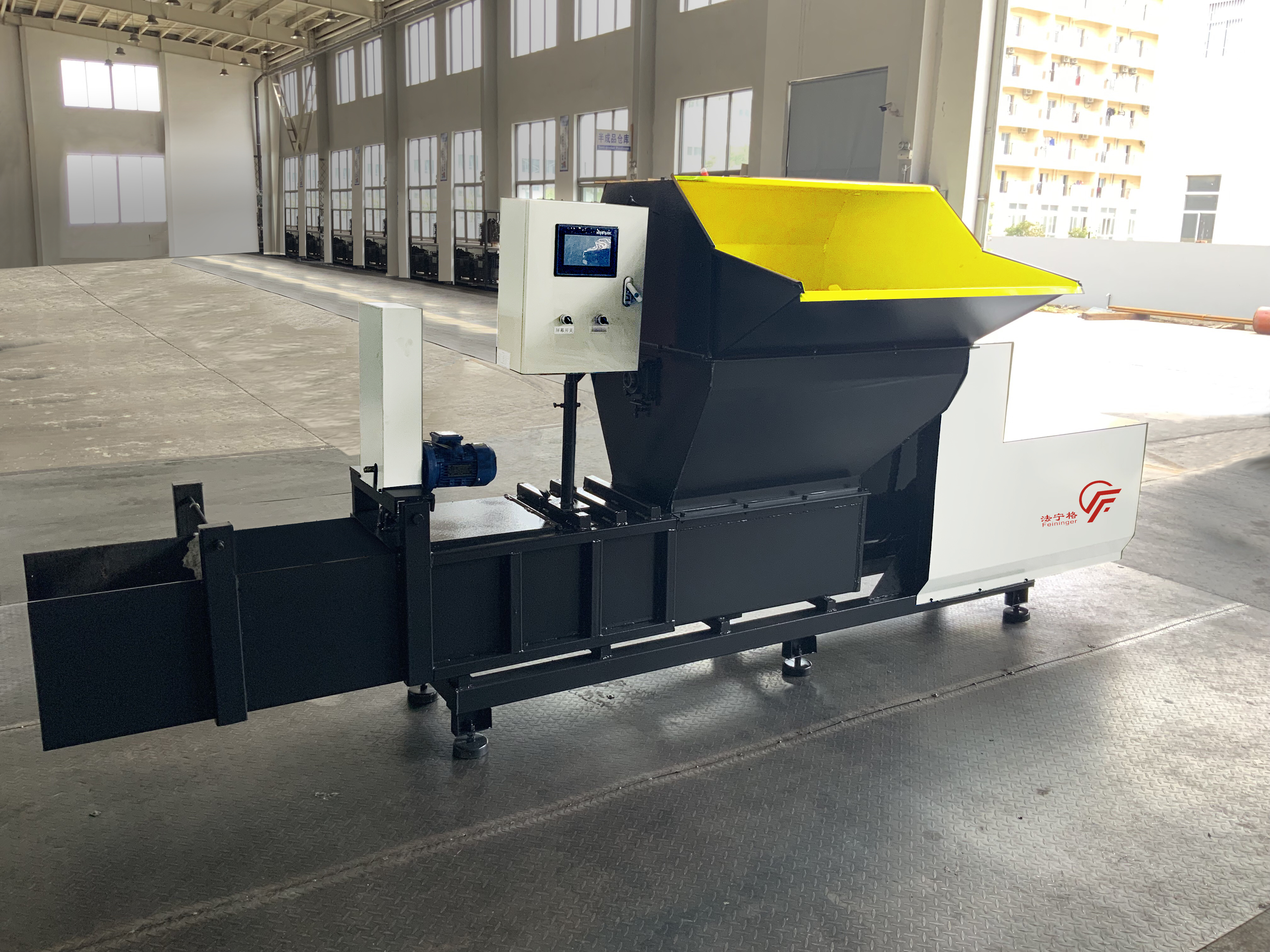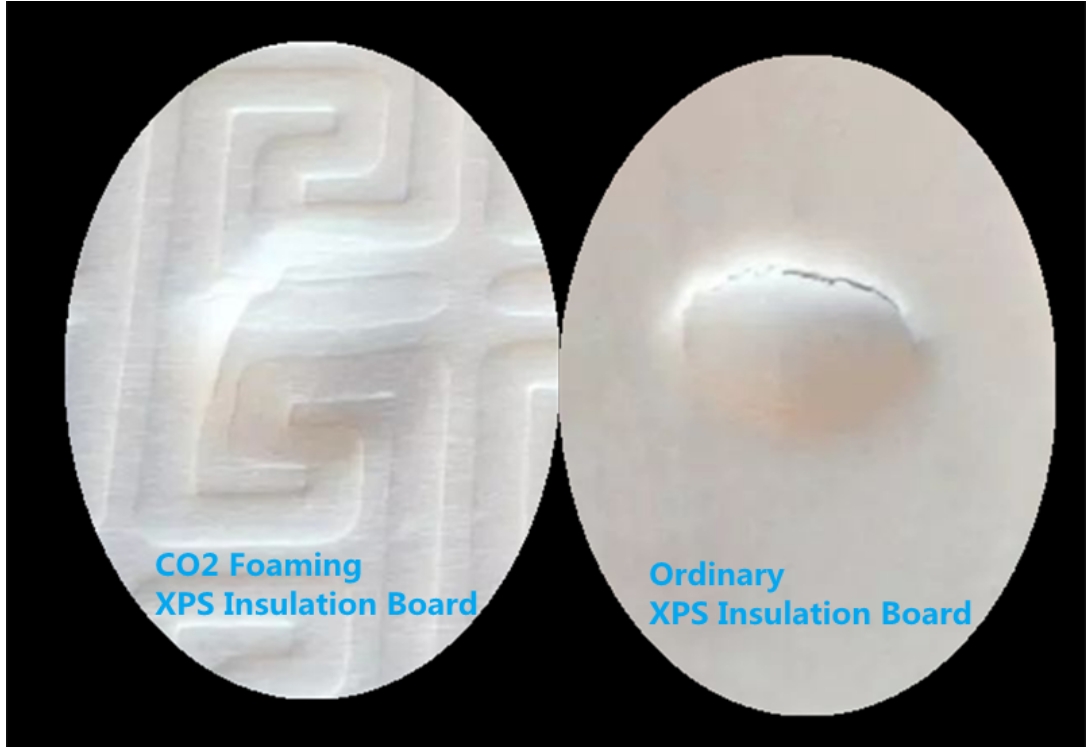1. What Is XPS Foam Extrusion Line?
Extrusion line for XPS is capable of making XPS sheet to fit for any applications. These boards are manufactured through an extrusion process. The production process involves melting together the plastic resin and other ingredients. Then foaming agent is continuously extruded through a die and expands during the cooling process.
2. How Does CO2 Foaming XPS Foam Extrusion Line Work?
The used manufacturing process of CO2 foaming XPS foam production line is hot extrusion as well. This extrusion process is characterized mainly by the continuous mixing of a blowing agent (CO2) into the melted polymer. The compound of various components is prepared in a mixer. Then is transported to a dosing device which feeds the mixture into the XPS extruder. After extrusion, the foam is guided through a mandrel to give the final shape.
3. Applications of XPS Foam Extrusion Line
Ceiling product: office, council rooms, lobbies, halls, department store, gyms, auditoriums, living rooms, schools, etc.
Exterior wall product: outer/inner walls, floors, partitions, stairways for buildings etc.
Floor product: apartment, living rooms, kitchen, bedrooms, house veranda, etc.
4. How Is XPS Foam Board Produced?
The extruded polystyrene board is widely used in major industries by virtue of its superior thermal insulation performance. The production process of the XPS foam board is not particularly complicated, but in order to ensure that the produced extruded board complies with national standards and industry specifications, we must pay attention to all links in the process of producing extruded board.
Generally speaking, the production process of extruded polystyrene foam board mainly has the following steps:
First Step
This step is mainly a plasticizing process. We should put polystyrene resin, nucleating agent, combustion aid, etc. into the first-stage plastic extruder through an automatic feeder.
Second Step
The second step is mainly the secondary mixing foaming and cooling process. The raw materials and auxiliary materials are fully plasticized in the extruder before injecting an environmentally friendly carbon dioxide foaming agent. The blowing agent is fully mixed with other raw materials in the second-stage extruder and cooled, and then extruded through the die.
Third Step
After extrusion, the pressure is quickly released, the foaming agent wrapped by the plastic expands rapidly to form closed cells, and under the action of the cells, the polystyrene plastic forms a foamed panel with honeycomb-shaped closed cells.
Fourth Step
Then, the shaping plate is shaped into the required thickness and width through the shaping tractor, and then it can be shaped by cutting. This step mainly controls the thickness and width of the board.
In addition to the main machine, there are various auxiliary equipment in the production process of extruded polystyrene board as well, such as surface roughening machine for the extruded board, recycling granulator, edge forming machine, slotting machine, automatic packaging machine, etc.
See also:
How Is XPS Extruded Board Produced?
5. What Is XPS Foam Board?
Extruded Polystyrene, referred to as XPS, is a closed-cell insulation product commonly used in remodelling and new construction applications. Due to the manufacturing process, XPS insulation is typically available only in standard dimension square or rectangular boards.
6. How to Recycle XPS Foam Board?
XPS material is usually made use of as a building and construction insulation board due to its great thermal insulation efficiency. With the increasing use of XPS, if it cannot be recycled and processed reasonably, the pollution to the environment will become more and more serious. The garbage produced by Polystyrene-related plastic products is light in weight, large in size, resistant to ageing, corrosion-resistant, chemically stable, and not easily degraded by microorganisms. After entering the soil, it is easy to deteriorate the soil quality. Therefore, XPS recycling is the most popular way to dispose of waste XPS at present and in the future. More and more people will pay attention to environmental protection, so good solutions to handle the waste XPS is very important.
Recycling Method of Waste Polystyrene:
a. Catalytic cracking
Catalytic cracking of waste polystyrene produces a mixture mainly containing styrene. The main component of the cracked gas is styrene. Qualified styrene monomer and its by-products are obtained through subsequent energy recovery, chill cooling and rectification separation, and the recovery rate of styrene monomer reaches 70-85%.
b. Recycling for the manufacture of coatings and adhesives
XPS/EPS is mainly composed of polystyrene (PS), which can be used as a base material for coatings with good water resistance and insulation. However, coatings prepared with PS as a base material have poor adhesion and film-forming properties, so when PS is used as a coating film-forming material, it needs to be modified.
The modified PS, as a film-forming material, can be combined with various additives to produce coatings and adhesives with special properties, such as water-resistant, anti-corrosive, and fire-resistant coatings. However, the organic solvent-containing adhesives and coatings prepared from waste XPS/EPS will cause secondary pollution to the environment and harm the health of the constructors during the use process.
c. Recycling to make PS recycled particles
The most important use of waste in the XPS production process should still be used to make PS recycled particles, and in some specific cases, it can be used to produce XPS sheets. This should also be the most common recycling method at present.
d. XPS Recycling Equipment
XPS recycling machine can substantially recycle XPS construction waste. The quantity decrease ratio varies from 40 to 60 times. And, we can provide high quality XPS/EPS recycling machine! Our EPS/XPS recycling system includes crusher and granulator these two parts:
Crusher
Rotor diameter: 350mm
Rotor length: 800mm
Rotary tool: 3*2pcs
Fixed tool: 2*2pcs
Rotor structure: staggered V-shaped structure
Chassis plate: greater than or equal to 16mm
Fixed knife plate: greater than or equal to 25mm
Motor power: 15KW
Granulator
Granulator capacity:200-280KG/H
Primary extruder
Motor: 37KW, 1470rpm, 380V, 50Hz
Material of Screw: 45# steel
Heating components: Cast Aluminum heater
Second extruder
Motor: 7.5KW, 1440rpm, 380V, 50Hz
Material of Screw: 38CrMoALA
Heating components: Cast Aluminum heater
Slot Die
Heating method/: Electric heating
Cooling tank: Integrated in Slot Die, manual/automatic changed
Material: Stainless steel
Pelletizer
Motor: 3KW, 380V, 50Hz


7. What Is XPS Foam Board Used For?
The continuous process produces a closed-cell structure XPS foam board that looks like a mass of uniform bubbles with common walls between them. A continuous smooth skin on the top and bottom also forms. The special structure of extruded polystyrene (XPS) foam helps it achieve an initial R-value of about R-5 per one inch (25 mm).
XPS foam board is often used for above-grade insulation applications such as walls, ceilings, attics and roofs as well as for below-grade applications such as foundations and basements.
The closed-cell structure of extruded polystyrene (XPS) foam imparts excellent long-term strength and durability. Products are available in a range of compressive strengths to suit varied application needs. Due to its inherent physical properties, this strength does not depend on the use of facers or laminates, which can sometimes be compromised during installation. However, extruded polystyrene (XPS) foam faced-products are available to add extra strength when specified for a particular application. Extruded polystyrene plastic also comes in a wide variety of sizes, and up to a thickness of 102 mm (4 in.) to suit many applications.
Properly installed extruded polystyrene (XPS) foam can also improve a building’s energy efficiency by providing a complete layer of insulation on the wall. This reduces air movement through the wall that can rob energy. Insulation between studs does not necessarily offer complete insulation value because wood studs and other framing members are not insulated. This phenomenon is called thermal bridging and can dramatically decrease thermal performance of the building.
8. Why XPS Foam Board Has So Many Colors?
Styrofoam is an insulation material similar to polyisocyanurate in its texture and rigidity. It is usually blue or pink in color, with a smooth plastic surface. Like fiberglass, the pink and blue colors are not natural. Polystyrene is liquified to create XPS. This liquid is mixed into a foam then shaped in a flat mold. Once hardened, it is cut into the 4’x 8’ sheet boards.
The colour of the foam board has no effect on its efficiency. XPS boards are coloured blue or pink to easily differentiate them visually from cheaper "beadboard," which is white. Beadboard is known by that name because its surface easily reveals the separate beads of polystyrene from which the board was formed. Air or moisture can become caught between these beads. XPS board, because it has no such visible beads, has a more consistent density and R-value than beadboard.
The colour of the foam board has no effect on its efficiency. XPS boards are coloured blue or pink to easily differentiate them visually from cheaper "beadboard," which is white.
9. What Are the Features of XPS Foam Board?
Completely closed cell structure
High compressive strength to weight ratio
Low thermal conductivity (high R rating)
Very low water absorption (<1%)
Resistance to bacteria and micro-organism growth
Dimensionally stable
Treated with fire retardant
Economical - energy savings outweigh the cost
Eco friendly - high R value per unit of embedded energy
CFC Free, and Zero Ozone Depletion
Easy to shape on site, or for model making with blade or hot wire
Fibre-free, and dust free when cut with hot blade or knife
10. Applications of XPS Foam Board
Now, we know some advantages of XPS foam, and what about the usage?
XPS products are applied to a building from its foundations to its roof, indicative application fields.
With the soundproof capability of XPS insulation board, it is now widely used for handling noise-proof floors, walls and roofs for Karaoke and Bar to prevent the extreme sounds inside from going outside.
Due to its density and strength enable it to be used for lining floors and even some highways.
Extruded polystyrene (XPS) insulation board is becoming a common construction material for swimming pools, condominiums, and even commercial buildings.
Actually, XPS foam board has a lot of applications.
11. Difference between CO2 Foaming and Ordinary XPS Insulation Board
Color


Under the same color masterbatch ratio, the color of CO2 foaming XPS insulation board is lighter.
(Note: It doesn't mean the board with lighter color is CO2 foaming XPS insulation board.)
Rigidity Handfeel

From the image above, we can see these two kinds of XPS foam panels are dented after pressing hard, and the surface of ordinary extruded polystyrene board appears a rupture. This means, the ordinary extruded polystyrene board has a thicker skin and high brittleness. And the surface basically has no cells, so it has no heat preservation effect, and the board is easy to sink once it breaks. However, CO2 foaming XPS insulation board has a low rigidity handfeel which signifies the skin is thinner and the heat preservation is better. This kind of panel does not sag after being pressed, which means that its cell structure is more stable.
Crystal Reflection of Fracture Surface

From the image above, we can see ordinary XPS insulation board has more crystal reflection of fracture surface which is very smooth. By comparison, the CO2 foaming XPS insulation panel has a uneven surface and a lot of striations. Do you know the reason? Because the object that has reflection is the wall of hole, the hole bigger, the more crystal reflection.

 Español
Español Pусский
Pусский




